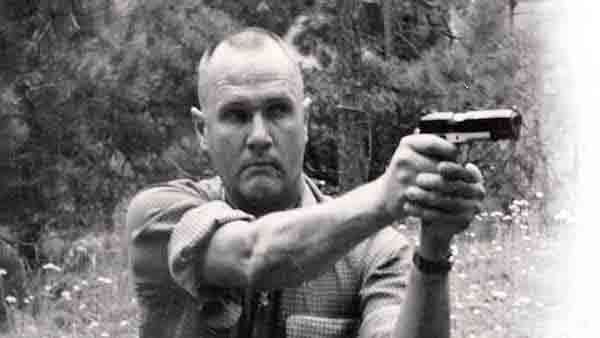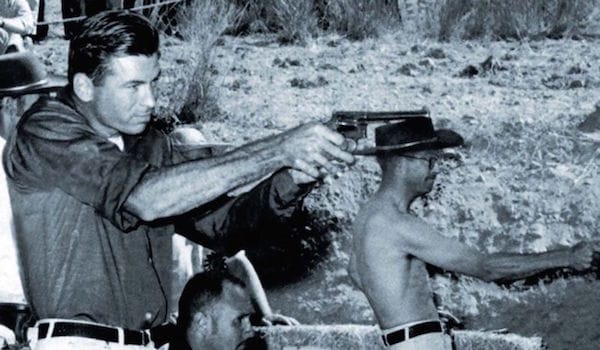Note: This article was originally posted on NRA Blog by Andy Lander, NRA Training Counselor Program Coordinator

USA –-(Ammoland.com)- Decades ago, defensive firearms trainers were few and far between. Legendary firearms trainers like Gunsite founder Lt. Col. Jeff Cooper and L.A. County Deputy Jack Weaver, have come and gone, truly known only to a select group of people who had the good fortune to cross paths and learn from the original masters. However, their contributions live on, referenced in reverence in books, message boards, social media and beyond.
There probably isn’t a day that goes by in some online forum that diehard shooting enthusiasts haven’t spent hours drafting a post to promote the “best” shooting stance, only to be ganged-up on by a vicious attack squad of angry torch-bearing keyboard typists advocating for the opposite… but I digress.

Many shooting activities will typically use or favor one position over the other for the sake of continuity. However, serious self-defense practitioners understand that certain circumstances, situations, or terrain dictates what may be the best or most appropriate shooting position to employ. If you’re a true student of the gun, you should be familiar with both the Weaver and Isosceles shooting positions.
While many people refer to the Weaver position as a “shooting stance,” many firearms trainers actually referred to the Weaver as a grip. The aforementioned Jack Weaver, who in addition to his time in law enforcement was a firearms instructor, developed the namesake Weaver stance. The famous photo of Weaver shooting this position next to a shirtless cowboy appears to show him in somewhat of a bladed stance, with his shooting arm fully extended while his support arm was slightly bent with the elbow facing downward.

Today, most people consider the Weaver stance a combat shooting position, designed to lower one’s profile and become a smaller target. Interestingly, Jack Weaver perfected this position in the old leather-slap shooting competitions. Standing in a bladed position may actually more readily expose a shooter’s vital organs. Any experienced deer hunter knows the best place to shoot a deer is right behind the shoulder. The trajectory of the bullet typically will impact multiple vital organs, increasingly lethality. This holds true to human beings, even when wearing protective body armor.

That said, the Weaver stance certainly does have its pros. While shooting, the shooting arm pushes forward while the support arm pulls rearward, creating isometric tension to manage the gun in recoil. This position is favored among more “seasoned” law enforcement veterans, particularly ones who joined the force before the widespread wear of protective body armor.
The Weaver is also useful when working in confined shooting quarters or when using a handheld flashlight while employing a Harries flashlight technique. In 2012, I traveled to Gunsite Academy in Paulden, Arizona. Under the watchful eye of the late, great Gunsite Rangemaster Mike Hughes, I was exposed to the modern technique developed by Colonel Cooper himself. The Weaver utilized at Gunsite was a more open stance, more akin to the isosceles shooting position. However, the arm position in isometric tension held true to what was previously mentioned. This contradicted what I previously thought was a more dramatic bladed stance that I had learned in the past to be the Weaver.

The Isosceles shooting stance has come to be known by many trainers as the “new modern technique.” I refer to this position as an indexed position, meaning there are many parts of the body pointed toward the target. This shooting position is favored among competitive shooters, but it also boasts a strong defensive application.
Standing on the balls of the feet pointing directly at the target, the feet are hip-width apart, with the belly button and shoulders pointed downrange. The shooter’s knees are slightly bent, their head is erect and the tip of the nose extends just beyond the tips of the toes. The arms are fully extended, when viewed from above the arms will form an isosceles triangle. This position allows the shooter to move quickly in any direction, and to rapidly transition to address targets to the left or right. Individuals wearing protective gear such as body armor also place the protective equipment directly in line with their target, maximizing the ability to better protect them from incoming fire.

I look forward to seeing what the future holds regarding shooting techniques, stances and technology, and what will be considered the new “new modern technique” in the coming years. I recently had a discussion with NRA Training Counselor Dr. Joe Katz and his wife Janet, owners of Paladin Services, LLC in South Carolina, who teach a wide variety of NRA training courses including NRA Personal Protection Outside the Home. This course teaches students both the Isosceles and Weaver shooting positions.
Our conversation led to a philosophical statement from Joe referencing firearms training in general: “Andy, you and I have had the pleasure to live in the Renaissance era of firearms training. It will be exciting to see what the future holds and what we will be teaching if we are still around in the next 50 years.”
This statement made an impact on me, and made me realize as Americans we are fortunate to have the ability to learn a wide variety of techniques with the best firearms instructors this world has ever seen. I personally challenge readers to pursue learning alternative shooting techniques, as it will only enhance your abilities and understanding of defensive shooting in general.
To find an NRA Personal Protection Outside the Home course in your area, visit www.nrainstructors.org. In the meantime, check out this episode of NRA Firearm Science as competitive shooting champions Jessie Duff and Tommy Thacker explain the pistol shooting stances!
(Main and marquee photo courtesy/GunsAmerica)
About Andy Lander
Andy Lander is an NRA Training Counselor Program Coordinator in NRA’s Education and Training Division. A graduate of Virginia Military Institute, Andy has been a competitive shooter since 1996, competing in NCAA smallbore rifle. Now, as a training counselor, he’s aided as a technical advisor for firearms training videos and television programs, contributed to firearms training books and lesson plans, trained actors, professional athletes and dignitaries, and has certified thousands of firearms instructors and instructor trainers in the NRA Training Programs.

I don’t use either one of these techniques. I shoot real world. From a number of different positions including out of balance. If the SHTF and you need to shoot in self defense there’s a good chance you won’t have time to get into a perfect shooting position. These techniques may be fine for at the range or even competition shooting. Just not for me.
you have a very valid point, the situation will dictate your stance, this is what i teach and the isosceles stance is a good place to start and who ever teaches to lock your elbows is wrong, Jessie suggested that , here is the problem with your elbows locked you body takes the recoil and your whole body moves, now if you bend your elbows slightly to use them as a shock absorber, push in with your arms with your shoulders, that will add a little more to your gripping power, fire the pistol and you will see that the… Read more »
As a former IPSC competitor, I use both the Weaver and the Isosceles. I’ve found that the Weaver is better for quick recoil recovery, and the Isosceles is more stable and provides greater precision, but is slower. So I use both, which one depends upon the situation. As a person, instead of a competitor, I also find it useful to practice one handed defensive shooting from the hip, keeping the off hand well up in a defensive position. I do this at 3 yards, and demand that every shot go into the vital area of the target by hand/eye co-ordination… Read more »
I was trained on the Weaver stance 40+ years ago. It is what I still use. On one occasion doing so kept me from losing an eye during a range session.
I, too, prefer the Weaver stance, having used it at Gunsite in 1981. I’d like to hear the story of how it saved your eye…
Unsurprisingly, everyone has their preferred position and most believe that theirs is the best. I recall an old Bruce Lee movie where Bruce declares a martial arts style and uses to deliver several blows to his opponent. The scene depicts him going through several styles in defeating his foe. I learned ‘cup and saucer’ from my Dad who was a tremendous shot with it. I also learned weaver and now mostly use isosceles. It can be difficult to change. No one method is the best for everyone; you should learn each and find what works best for you. Denigrating an… Read more »
I have always preferred the Weaver,
However, as a LEO, we trained with the Isosceles based on the fact that your body armor (a brand new ‘thing’ in those days) would be positioned to better protect you.
Let’s give Weaver credit for popularizing the stance, but people before him were using it. He showed us how to be effective using the stance but he didn’t invent anything
Weaver, COL Cooper, Mark “Thell” Reed and another guy were winning all the “Leather Slap” tournaments in the 1960s . Reed was so fast that Bob Munden would not shoot against him. All of those guys developed revolutionary techniques. I bet Richard Boone was glad that they did not invite him as a special tournament guest.
Stance? We’re talking about a gunfight, right?
I’m not standing, I’m moving.
Are you shooting while you’re moving? Do you know how to shoot and move? Suppose you have nowhere to move to?
Because of certain injuries I’ve received over the last two years, one very severe non dominant hand injury, I’m now “forced” to use a modified Weaver stance. It’s actually somewhere in the middle between Iso and weaver and allows me to use my damaged hand to it’s fullest. I was advised to go full Iso, but never could adjust … same for full Weaver. I suspect it was in part a result of the injury and part just what I felt I could reasonably do. After paying particular attention to this aspect of handgun shooting, I’ve come to the conclusion… Read more »